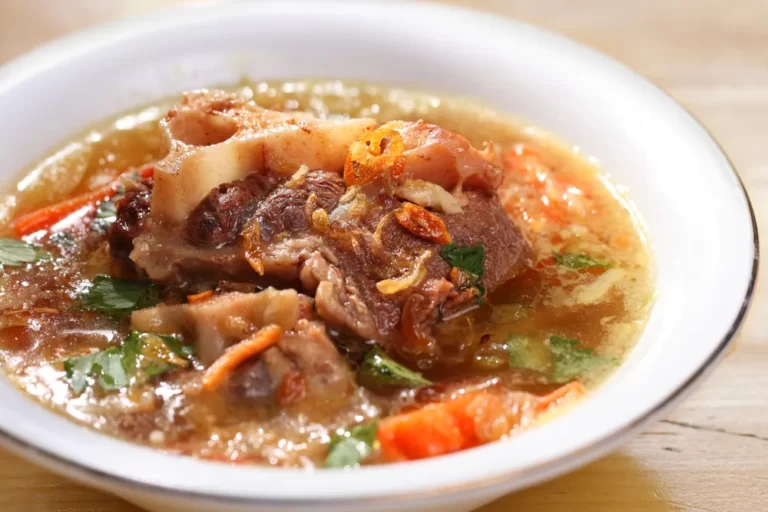If you’re looking for a mouthwatering recipe to feature on your food blog, look no further than beef bulgogi.
This popular Korean dish is known for its tender, marinated beef slices cooked to perfection.
With a combination of sweet, savory, and smoky flavors, beef bulgogi is a surefire hit for any occasion.
In this article, we’ll guide you through the process of making beef bulgogi, provide some helpful tips, and answer frequently asked questions.
So, let’s get started!

Recipe for Beef Bulgogi
Ingredients
- 1 pound of beef ribeye or sirloin is recommended
- ¼ cup of soy sauce
- 2 tablespoons of brown sugar
- 2 tablespoons of sesame oil
- 1 tablespoon of minced garlic
- 1 tablespoon of grated ginger
- 2 green onions thinly sliced
- 1 tablespoon of toasted sesame seeds
- 1 tablespoon of vegetable oil
- Sliced mushrooms or onions Optional
Instructions
- Freeze the beef for about 30 minutes to make it easier to slice thinly. This step is optional but highly recommended for achieving tender beef slices.
- In a mixing bowl, whisk together the soy sauce, brown sugar, sesame oil, minced garlic, and grated ginger until the sugar has dissolved.
- Take the beef out of the freezer and slice it against the grain into thin strips. Cutting against the grain helps to ensure the beef remains tender.
- Place the sliced beef in a ziplock bag or a shallow dish and pour the marinade over it. Mix well, making sure all the beef is coated.
- Marinate in the refrigerator for at least 1 hour, or overnight for maximum flavor.
- Heat the vegetable oil in a large skillet or grill pan over medium-high heat.
- Add the marinated beef and cook for about 3-4 minutes per side, or until the beef is cooked through and slightly caramelized.
- Optional: If using sliced mushrooms or onions, you can add them to the pan along with the beef and cook until tender.
- Sprinkle the cooked beef bulgogi with green onions and toasted sesame seeds for added freshness and crunch.
- Serve hot with steamed rice and enjoy!
Notes
- Calories: 280
- Protein: 22g
- Carbohydrates: 12g
- Fat: 15g
- Fiber: 1g
- Sugar: 9g
- Sodium: 930mg

Tips for Perfect Beef Bulgogi:
FAQ’S
What wines pair well with korean Beef Bulgogi?
When it comes to pairing wine with Korean beef bulgogi, which has a sweet and spicy profile, I must advise against selecting red wines rich in tannins, as their strong profile can compete with the flavors of your beef Bulgogi, thus creating an unsuitable match: you’ll tipicallly want a red wine with high acidity, but low in tannins. Less “heavy and earthy” is the way to go. There are several options that can complement its bold flavors without overpowering them. Here are some suggestions:
Pinot Noir – This light-bodied red wine pairs well with the sweet and savory elements of bulgogi, balancing out the spiciness from the chili flakes and garlic. The wine’s acidity also helps cut through the richness of the meat.
Cabernet Sauvignon – A full-bodied red wine like Cabernet Sauvignon can stand up to the bold flavors of bulgogi, especially if it’s paired with dishes that have a high umami content (like miso soup or kimchi). The tannins in the wine will complement the charred, caramelized texture of the beef.
Sparkling wine – For a lighter option, consider a sparkling white wine like Prosecco or Cava. These wines have a crisp acidity that will refresh your palate between bites, and their fruitiness won’t overwhelm the delicate flavors of the beef.
Rosé – If you prefer a pink wine, rosé is another good option. Its fruity and floral notes will complement the sweetness of the marinade, while its acidity will balance out the heat from the chili peppers.
Soju – Lastly, for an authentic touch, you might consider Soju — a classic Korean spirit that harmonizes elegantly with numerous Korean barbecues, Bulgogi certainly not being an exception! While this isn’t technically a wine, soju (a clear, distilled spirit made from rice) is commonly consumed with Korean cuisine, including bulgogi. It has a smooth, slightly sweet taste that complements the bold flavors of the dish without overpowering them.
Ultimately, the best pairing will depend on personal preference, but these options offer a range of styles and flavor profiles that can enhance the experience of enjoying Korean beef bulgogi.
Enjoy your meal!
Is it necessary to freeze the beef before slicing?
Freezing the beef helps to firm it up, making it easier to slice thinly. This step is optional but recommended for the best results.
Can I make beef bulgogi in advance?
Absolutely! You can marinate the beef in advance and keep it refrigerated for up to 24 hours before cooking. This makes it a great option for meal prep or entertaining.
Can I substitute the soy sauce with a gluten-free alternative?
Yes, there are gluten-free soy sauce options available, such as tamari or coconut aminos, which can be used as a substitute in this recipe.
Can I use a different cut of beef for bulgogi?
While rib-eye or sirloin are the traditional cuts used for beef bulgogi, you can experiment with other cuts like flank steak or even thinly sliced beef brisket.







